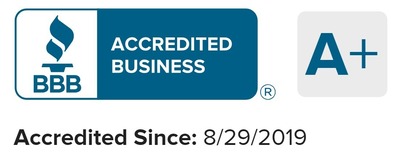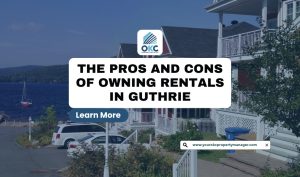So, you’re a landlord dealing with tenant turnover? It’s a common reality for every property owner. But have you ever considered how much it’s truly costing you? Tenant turnover isn’t just an inconvenience—it’s an expensive problem quietly draining your profits.
Here’s the good news: there are proven solutions to this challenge. With over 20+ years of experience in property management, I’ve seen firsthand how prioritizing tenant retention transforms a rental business. In this article, I am discussing the importance of tenant retention and offering actionable strategies for retaining reliable tenants to maximize your rental income. Let’s turn turnover challenges into opportunities for your growth and lasting profitability!
Why Losing Tenants Costs More Than You Think
In property management, tenant retention plays a crucial role in maximizing profitability. When tenants vacate unexpectedly or frequently, it’s like a financial avalanche that starts small but quickly builds up speed, crashing into your cash flow, operations, and investment goals. Understanding the true costs of turnover helps you make informed decisions about it.
Here’s a breakdown of what tenant turnover can cost you:
1. Lost Rental Income
Vacancies are revenue black holes. Each day your property sits empty, it represents no cash flow in your financial statement. Depending on your location, it could take weeks or even months to find a reliable tenant. Even in a competitive rental market, immediate replacement isn’t possible. But your mortgage payments, property taxes, insurance, and maintenance costs keep increasing, leaving your tragic status. For e.g., If your monthly rent is $1,500 and it takes two months to fill the vacancy, that’s $3,000 lost at your hand without counting other expenses.
2. Marketing and Advertising Costs
Filling a vacant unit isn’t free. Attracting new tenants involves marketing your property, conducting showings, and screening potential renters. These activities consume time and require a financial outlay, whether for online ads, professional photography, or background checks, depending on the strategies used. If a property management company handles this process, additional fees also apply, further cutting your profits. Moreover, the more competitive the rental market is, the higher the marketing costs will be, as you need to stand out to attract quality tenants.
3. Opportunity Costs
Tenant turnover comes along with hidden opportunity costs. If you’re busy managing turnover, you are distracted from other opportunities limiting your overall profitability and building your rental empire. The energy spent managing a vacancy, conducting showings, screening tenants, and dealing with repairs takes valuable time away from other critical activities. That effort could be better invested in growing your portfolio, improving your property, or enhancing tenant satisfaction for your remaining renters to increase retention.
4. Long-Term Value Implications
Frequent tenant turnover harms the long-term value of your investment. A history of high turnover damages your property’s reputation, making it harder to attract quality tenants in the future. Many renters rely on reviews, word-of-mouth, or their own research when choosing rentals and properties with frequent vacancies are viewed as undesirable. And continuous move-ins and move-outs disrupt cash flow and divert your focus from growing your rental portfolio, ultimately hindering long-term financial growth. Over time, these factors erode the property’s market value and lose appeal to sell or refinance.
5. Maintenance and Turnover Repairs
Frequent turnovers contribute to accelerated wear and tear on the property. Each time a tenant moves out and a new one moves in, the property is exposed to additional risks of damage, such as scuffed walls, scratched floors, and other signs of use. Over time, these repeated moves degrade the condition of the property, leading to higher maintenance and repair costs. More frequent maintenance needs also divert attention away from long-term property upgrades, affecting its value and appeal to future tenants.
6. Risk of Bad Tenants
Every new tenant brings a level of uncertainty. Rushing the leasing process to fill a vacancy increases the chance of selecting the wrong tenant who:
- Fails to pay rent consistently.
- Causes excessive wear and tear.
- Disrupts the community, potentially driving other tenants away.
These risks lead to additional costs and extend the turnover cycle, as poor tenants may leave sooner or require eviction. The cost of evicting a bad tenant can range from $3,500 to $10,000, including legal fees, court costs, and lost rent during the process.
[Learn to prevent risks of bad tenants by recognizing the warning signs of bad tenants]
How Tenant Retention Saves You Thousands
Did you know that replacing a tenant can cost up to five times the monthly rent? That’s why focusing on tenant retention is crucial for your rental business. It’s not just about avoiding the hassle of turnover—it’s a proven pathway to long-term profitability and stability in your rental property portfolio. Here’s how retaining tenants saves you thousands:
1. Eliminates Turnover Costs
Every time a tenant moves out, you face unavoidable expenses like cleaning, repairs, marketing, and tenant screening. According to industry estimates, turnover costs run between $1,000 and $5,000 per unit, depending on the property and market conditions. By encouraging tenants to stay longer, you avoid the repetitive drain of turnover costs and keep your budget stable, and allocate funds to other important areas. For instance, a property with ten units experiencing just one turnover per unit annually could see a cost savings of $10,000 to $50,000 by maintaining tenant retention.
2. Boosts Cash Flow Stability
Long-term tenants provide consistent rental income without interruption, which is crucial for financial stability. This consistent cash flow allows you to avoid financial stress caused by vacant periods and plan long-term investments and improvements with predictable revenue year-round. Properties with high tenant retention rates also command better financing terms, as lenders often look favorably on stable and predictable income streams.
3. Reduces Stress
Fewer turnovers mean less time spent on screening, marketing, and property preparation. The tasks associated with turnovers—advertising, responding to inquiries, and screening potential tenants take considerable time and energy, mostly requiring weeks of effort. By retaining tenants, you reduce these repetitive burdens, freeing up time to focus on other aspects of property management or personal priorities. This reduction in workload also leads to improved efficiency and productivity within the property management team.
4. Encourages Property Care
Happy, long-term tenants are more likely to treat the property as their own home. They build a sense of pride and responsibility, which leads to reduced wear and tear and timely reporting of problems, preventing costly repairs. Proactive care from tenants ensures that your property retains its value and can command higher rental rates over time. Studies show that properties with high tenant satisfaction experience 20% fewer maintenance issues, interpreting major savings on repair costs.
5. Improved Tenant Relationships Drive Higher ROI:
Satisfied tenants prefer to renew their leases, reducing vacancy rates and turnover expenses. Surveys reveal that tenant retention is strongly linked to factors like responsive maintenance, transparent communication, and competitive incentives. Landlords prioritizing these elements increase lease renewal rates by 10-20%. Simple initiatives like timely maintenance or small lease renewal perks, such as discounted rent or gift cards, deliver good returns by fostering loyalty and reducing the likelihood of vacancies.
7 Actionable Strategies to Retain Your Tenants
Investing in retention pays dividends—both financially and emotionally. In the competitive world of property management, retaining tenants is more cost-effective than constantly searching for new ones. Here are 7 actionable strategies to keep tenants satisfied, backed by industry insights:
1. Offer Competitive Rent and Incentives
Keeping rent prices competitive within the local market is crucial. Data from the National Multifamily Housing Council shows that rental affordability is a top priority for tenants. Landlords who offer periodic rent discounts or incentives like free parking or gift cards for lease renewals help strengthen relationships and encourage your tenants to stay longer. Even small perks create a sense of value.
2. Maintain Open and Consistent Communication
Tenants value landlords who communicate effectively and respond quickly to concerns. According to a survey by Buildium, 47% of tenants reported that poor communication with property management was a key factor in their decision to leave. Ensuring your regular updates via email, text, or tenant portals about maintenance schedules, community events, or policy changes helps foster transparency and trust.
3. Provide a Well-Maintained Property
The quality of the living environment positively impacts your tenant satisfaction. In a survey by RentCafe, 78% of renters stated that timely repairs and clean common areas were crucial for retention. Regularly inspect and address any maintenance issues to avoid their frustrations. Offering online maintenance requests and a fast response time also helps to improve tenant loyalty.
4. Create a Community Atmosphere
People seek more than just a place to live—they want to feel part of a community. Landlords who host events like BBQs, movie nights, or holiday gatherings can create a more inviting environment. According to the National Apartment Association, community-focused amenities and events increase your tenant satisfaction and longer leases.
5. Implement Effective Tenant Screening
The process of selecting the right tenants from the start helps to reduce future problems. According to the National Association of Residential Property Managers, tenant screening that includes background checks, credit history, and references helps ensure you’re placing responsible tenants who are more likely to stay. By carefully vetting applicants, you can avoid conflicts that might lead to early lease terminations.
6. Utilize Technology to Smooth Processes
In today’s digital world, you should leverage technology to improve tenant experience. Online payment systems, maintenance request portals, and lease management software make processes faster and more convenient. According to Property Management Insider, properties using advanced technology tools experience higher tenant satisfaction and are more likely to retain tenants for longer periods.
7. Reward Loyalty and Long-Term Renters
Providing incentives for long-term tenants helps reinforce loyalty. Offering renewal bonuses or small rent increases over time, instead of large hikes, build goodwill. A report from Apartment Guide found that tenants who received perks such as rent discounts or loyalty rewards were more interested in renewing their leases compared to those who didn’t. Retaining a tenant for multiple years saves considerable costs compared to finding a new one.
[Learn how to address tenant dissatisfaction in our blog on 7 Signs of Tenant Dissatisfaction.]
How You Can Measure Retention Success
Measuring tenant retention success directly impacts operation efficiency and profitable property management business. Two primary metrics, the tenant retention rate, and tenant satisfaction surveys, can effectively assess retention success.
1. Tenant Retention Rate
The Tenant Retention Rate is a key performance indicator that reflects the percentage of tenants who renew their leases compared to the total number of leases in a given period. The formula to calculate this is:
Tenant Retention Rate= (Number of Renewed Leases /Total Number of Leases) × 100
For example, if you have 100 leases and 80 of those tenants renew their leases, the TRR would be:

A retention rate above 75% is generally considered a sign of effective tenant retention strategies. Data from industry reports suggest that a retention rate of 80% or higher results in major cost savings, as retaining a tenant is typically less expensive than acquiring a new one. For example, according to the National Apartment Association, the average cost of turnover—including advertising, repairs, and lost rent—range from $2,000 to $4,000 per vacancy. By keeping tenants longer, you reduce these costs, ultimately enhancing the profitability of their properties.
2. Tenant Satisfaction Surveys
Surveys are a direct way to determine tenant sentiment and identify factors influencing their decision to renew or vacate. These surveys address property maintenance, communication with management, and overall living experience.
According to a survey by the National Multifamily Housing Council, properties with high tenant satisfaction scores have a much higher likelihood of tenant retention, with satisfied tenants being 70% more likely to renew their leases. Collecting feedback regularly allows you to pinpoint areas for improvement, such as upgrading amenities or responding more quickly to maintenance requests, which enhance tenant satisfaction and increase retention rates.
Why Tenant Retention Makes Business Sense
Retention makes undeniable business sense in property management. They foster goodwill and elevate your reputation in the competitive rental market. As a property manager, I’ve observed that satisfied tenants tend to recommend properties to their friends, enhancing word-of-mouth marketing, which is more effective and trustworthy than traditional advertising. They act as your brand ambassador.
Positive online reviews from current tenants also bolster the property’s reputation, attracting more high-quality renters. Moreover, when tenants renew their leases, it creates a ripple effect of stability. High retention rates mean fewer disruptions for landlords, enabling you to focus on strategic improvements rather than constant turnover.
In my experience, investing in tenant satisfaction through responsive maintenance, clear communication, and community-building activities pays off by creating a loyal tenant base. Tenants feel valued which translates directly into lower operational costs and higher profitability, making retention a smart and effective business strategy—a win-win for all parties involved.
Conclusion: Retention Is the Key to Profitability
Retaining tenants is a smart business move that transforms potential losses into long-term gains in your rental business. By prioritizing tenant satisfaction, you’re not just managing properties—you’re enhancing the value and appeal of your entire property portfolio.
Are you ready to reduce turnover and maximize your rental income? At OKC Home Realty Services, we specialize in helping landlords like you with retention-focused property management services. Contact us today to see how we help you save thousands while keeping your tenants happy and your properties profitable.

Author
Scott Nachatilo is an investor, property manager and owner of OKC Home Realty Services – one of the best property management companies in Oklahoma City. His mission is to help landlords and real estate investors to manage their property in Oklahoma.
 (
(









